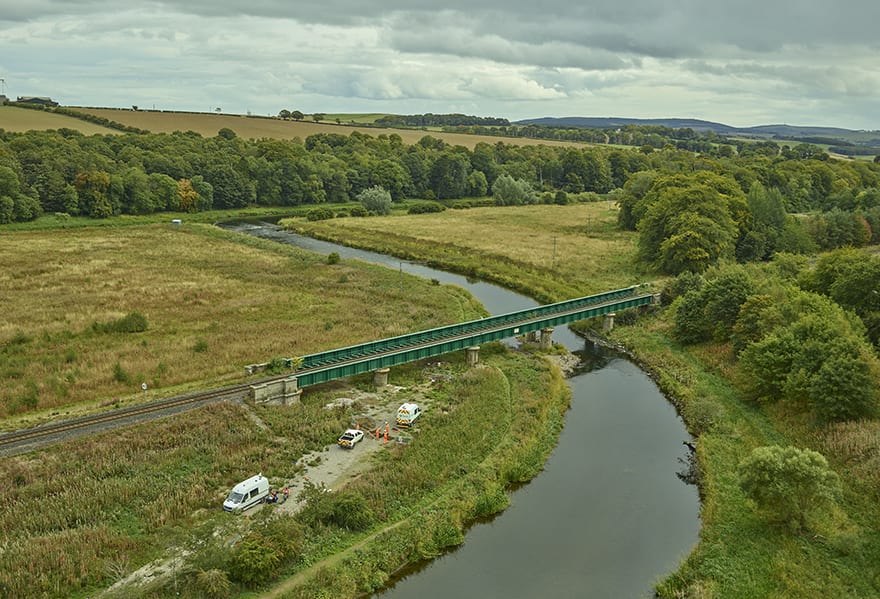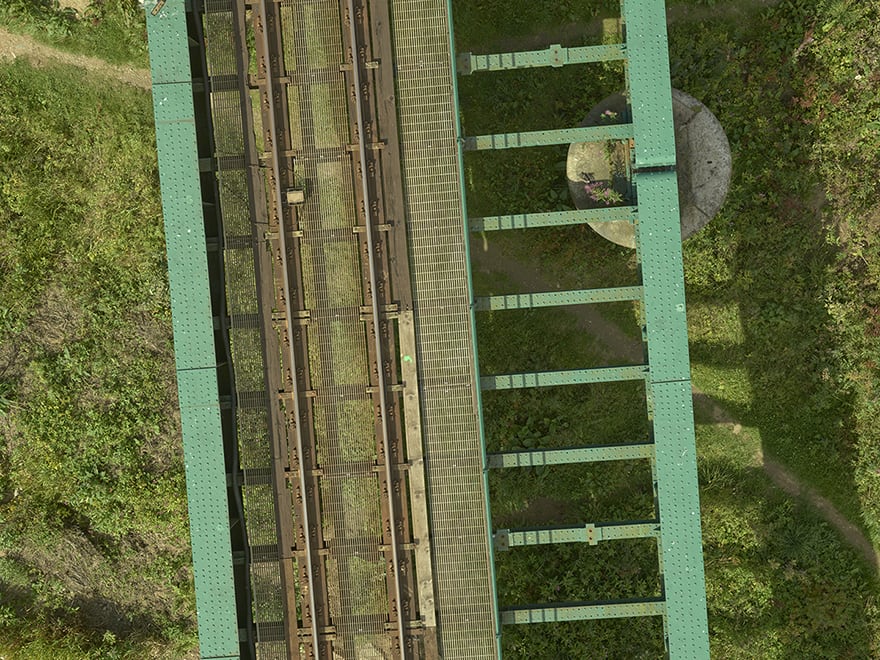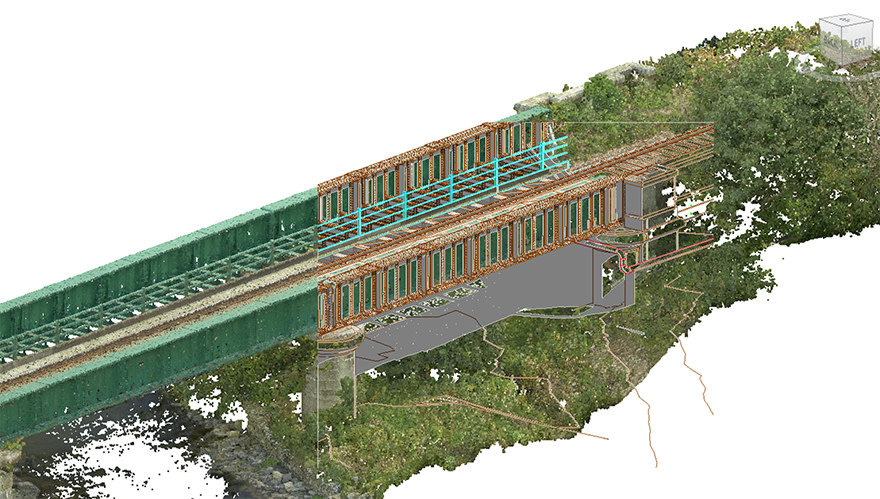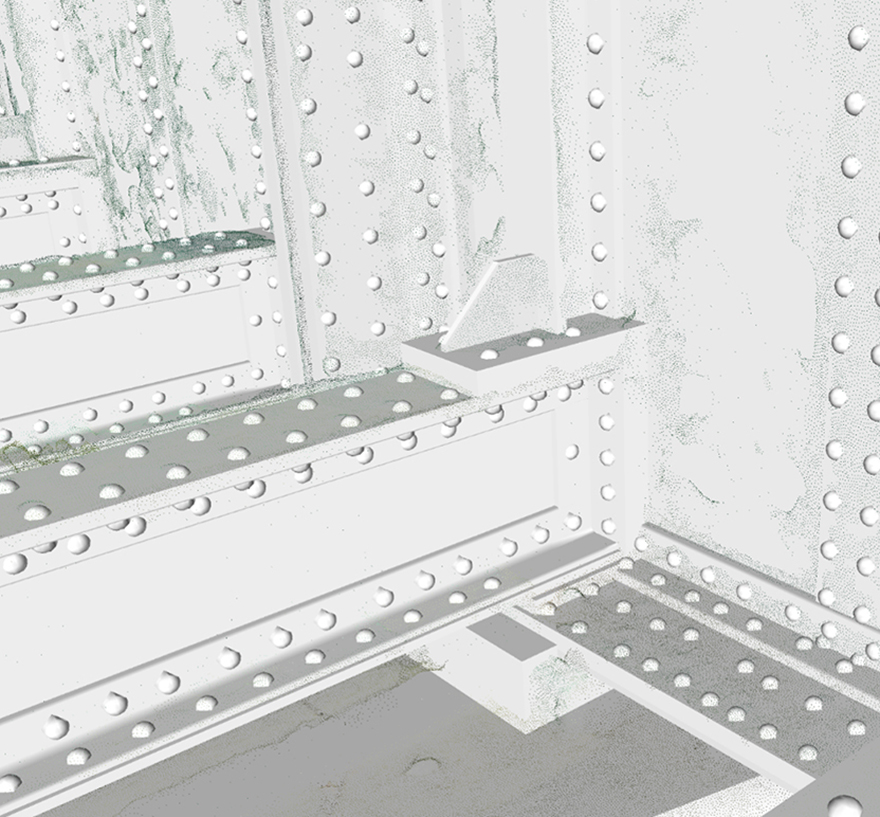- Client: Network Rail
- Lead Contractor: BAM Nuttall
- BIM Tools: Autodesk Recap, BIM 360
The River Don viaduct forms a key part of the £170m Aberdeen-Inverness improvement project currently being delivered by BAM Nuttall for Network Rail.
The Scottish government-funded project is intended to increase the frequency of trains and shorten journey times between the two northern cities. A 16-mile section of line between Aberdeen and Inverurie, which includes the River Don viaduct, will have its track doubled to enable bi-directional travel.
BAM Nuttall contracted surveying firm Plowman Craven to carry out a detailed survey of the viaduct and deliver an information-rich component-based BIM model to use as the foundation for its detailed design work and ongoing use of BIM.

A 16-mile section of line between Aberdeen and Inverurie, which includes the River Don viaduct, will have its track doubled
The surveying company deployed its in-house-developed Vogel R3D drone to capture the track route, viaduct structure and nearby terrain as high-accuracy sub-5mm survey data and 3D point clouds. Human surveyors were then mobilised on the ground to capture any areas that could not be seen from the air.
Sian Morris, BIM manager at Plowman Craven, told BIM+: “The drone is able to capture around 40 high quality photos per minute, using it meant the survey was completed fast and the line was not disrupted, it improved safety by minimising the amount of time human surveyors were on the track.”
BAM Nuttall interrogated the point clouds in Autodesk Recap to improve understanding of the site without the need to visit it as frequently. Meanwhile, Plowman Craven’s team used the point cloud data to develop an intelligent component-based BIM model, with relevant classification data.

Drones were used for aerial surveys

BAM Nuttall interrogated the point clouds in Autodesk Recap

Every detail was modelled, including rivets
“We literally modelled every single component, including around 80,000 rivets, which in combination with information provided by Network Rail, helped the project team understand any deviations from the initial design, what they would need to replace, which parts require maintenance and how to organise the programme,” added Morris.
Jack Mitchell, digital construction package manager at BAM Nuttall, is leading a drive to digitise infrastructure. He invited Plowman Craven to present its model of the viaduct to Network Rail to explain potential ongoing uses to improve programming and on-site safety.
“We demonstrated how 4D BIM can quickly visualise build sequences and potential CDM issues, and its potential use for site inductions. Network Rail is very keen on advanced technology but they want it to be accessible, I think this opened their eyes,” says Morris.
Plowman Craven gave the project manager at BAM Nuttall a version of the model in the smartphone app Autodesk BIM 360 to demonstrate to workers on site how simple it is to navigate and interrogate models.
As construction work on the viaduct gets underway, it is understood that Plowman Craven’s original BIM model has been developed to support design schedule outputs and other BIM processes.















